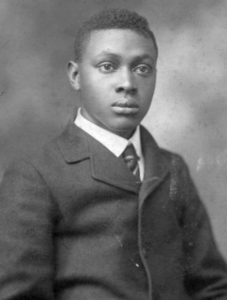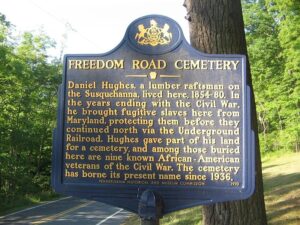Heritage / Roots Uncovered, News & Updates
Heritage / Roots Uncovered, News & Updates
In honor of Black History Month, the Lumber Heritage Region (LHR) recognizes the vital contributions of Black individuals in Pennsylvania’s lumber industry, forestry, and conservation efforts. Despite limited documentation, there is clear evidence that African Americans played a crucial role in shaping the region’s forestry legacy.
The Civilian Conservation Corps (CCC), a New Deal program that helped restore Pennsylvania’s forests, had 151 camps statewide—33 of which were segregated Black camps. These men planted trees, built roads, and restored lands devastated by overlogging. While Black enrollees earned equal pay to their white counterparts, they had fewer educational opportunities and were often denied leadership roles. Many of the CCC’s forestry and conservation projects remain visible in the Lumber Heritage Region today, nearly 90 years later.

Ralph E. Brock
A pioneer in forestry and conservation, Ralph E. Brock was America’s first academically trained Black forester, graduating in 1906 from Pennsylvania’s Mont Alto Forestry Academy under Joseph Trimble Rothrock (Pennsylvania’s “Father of Forestry”). Brock managed the state’s forest seed nursery, successfully overseeing a mostly white staff despite facing racism and discrimination.
After leaving his position, Brock established his own seed nursery and worked in landscape management. He was later hired by John D. Rockefeller Jr. as a gardener for the Paul Laurence Dunbar Apartments in Harlem and oversaw projects at Radio City Gardens, Riverside Park, and Harlem River Houses. His legacy is honored by historical markers, trees planted in his name, and the renaming of South Mountain Seed Orchard to the Ralph E. Brock Seed Orchard by Pennsylvania’s Department of Conservation and Natural Resources (DCNR).
The Underground Railroad played a crucial role in Black history and the LHR’s legacy. Williamsport, known as the “Lumber Capital of the World”, was also a key stop on the Underground Railroad..

While pioneers like Ralph Brock and Daniel Hughes broke barriers, representation in forestry, conservation, and natural resource management remains limited. Today, organizations like DCNR, the LHR, and forestry education programs are working to create equitable opportunities for all. Recognizing the contributions of Black foresters, lumber workers, and conservationists is key to promoting inclusivity and preserving this often-overlooked history.
Sources:
chrome-extension://efaidnbmnnnibpcajpcglclefindmkaj/https://lumberheritage.org/wp-content/uploads/2023/11/Part_2.pdf
https://en.wikipedia.org/wiki/Ralph_E._Brock
https://underground.lynnestomin.com/sites.html
https://www.sungazette.com/news/top-news/2017/02/city-was-key-point-along-underground-railroad/
https://en.wikipedia.org/wiki/Daniel_Hughes_(underground_railroad)
https://susquehannavalley.blogspot.com/2020/01/when-frederick-douglas-spoke-in.html
https://theclio.com/entry/87807
https://www.dcnr.pa.gov/GoodNatured/Pages/Article.aspx?post=228
http://www.paenvironmentdigest.com/newsletter/default.asp?NewsletterArticleID=52391&SubjectID=
© 2025 Lumber Heritage Region LLC | Website Designed & Hosted by Pixel & Hammer